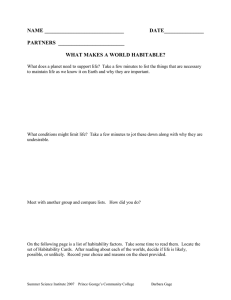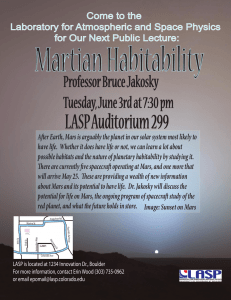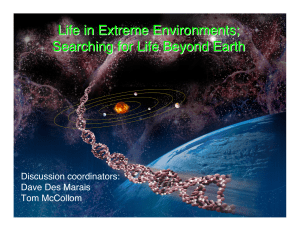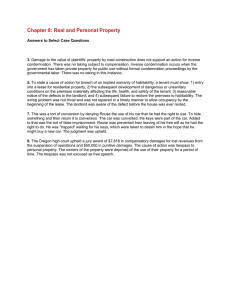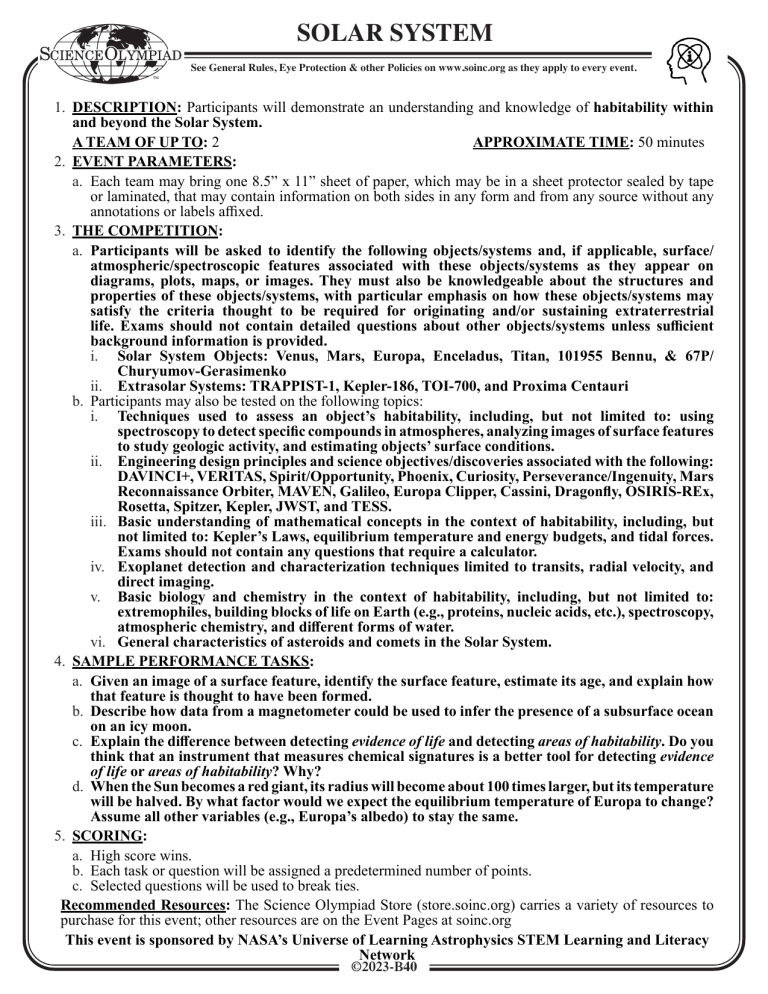
SOLAR SYSTEM See General Rules, Eye Protection & other Policies on www.soinc.org as they apply to every event. 1. DESCRIPTION: Participants will demonstrate an understanding and knowledge of habitability within and beyond the Solar System. A TEAM OF UP TO: 2 APPROXIMATE TIME: 50 minutes 2. EVENT PARAMETERS: a. Each team may bring one 8.5” x 11” sheet of paper, which may be in a sheet protector sealed by tape or laminated, that may contain information on both sides in any form and from any source without any annotations or labels affixed. 3. THE COMPETITION: a. Participants will be asked to identify the following objects/systems and, if applicable, surface/ atmospheric/spectroscopic features associated with these objects/systems as they appear on diagrams, plots, maps, or images. They must also be knowledgeable about the structures and properties of these objects/systems, with particular emphasis on how these objects/systems may satisfy the criteria thought to be required for originating and/or sustaining extraterrestrial life. Exams should not contain detailed questions about other objects/systems unless sufficient background information is provided. i. Solar System Objects: Venus, Mars, Europa, Enceladus, Titan, 101955 Bennu, & 67P/ Churyumov-Gerasimenko ii. Extrasolar Systems: TRAPPIST-1, Kepler-186, TOI-700, and Proxima Centauri b. Participants may also be tested on the following topics: i. Techniques used to assess an object’s habitability, including, but not limited to: using spectroscopy to detect specific compounds in atmospheres, analyzing images of surface features to study geologic activity, and estimating objects’ surface conditions. ii. Engineering design principles and science objectives/discoveries associated with the following: DAVINCI+, VERITAS, Spirit/Opportunity, Phoenix, Curiosity, Perseverance/Ingenuity, Mars Reconnaissance Orbiter, MAVEN, Galileo, Europa Clipper, Cassini, Dragonfly, OSIRIS-REx, Rosetta, Spitzer, Kepler, JWST, and TESS. iii. Basic understanding of mathematical concepts in the context of habitability, including, but not limited to: Kepler’s Laws, equilibrium temperature and energy budgets, and tidal forces. Exams should not contain any questions that require a calculator. iv. Exoplanet detection and characterization techniques limited to transits, radial velocity, and direct imaging. v. Basic biology and chemistry in the context of habitability, including, but not limited to: extremophiles, building blocks of life on Earth (e.g., proteins, nucleic acids, etc.), spectroscopy, atmospheric chemistry, and different forms of water. vi. General characteristics of asteroids and comets in the Solar System. 4. SAMPLE PERFORMANCE TASKS: a. Given an image of a surface feature, identify the surface feature, estimate its age, and explain how that feature is thought to have been formed. b. Describe how data from a magnetometer could be used to infer the presence of a subsurface ocean on an icy moon. c. Explain the difference between detecting evidence of life and detecting areas of habitability. Do you think that an instrument that measures chemical signatures is a better tool for detecting evidence of life or areas of habitability? Why? d. When the Sun becomes a red giant, its radius will become about 100 times larger, but its temperature will be halved. By what factor would we expect the equilibrium temperature of Europa to change? Assume all other variables (e.g., Europa’s albedo) to stay the same. 5. SCORING: a. High score wins. b. Each task or question will be assigned a predetermined number of points. c. Selected questions will be used to break ties. Recommended Resources: The Science Olympiad Store (store.soinc.org) carries a variety of resources to purchase for this event; other resources are on the Event Pages at soinc.org This event is sponsored by NASA’s Universe of Learning Astrophysics STEM Learning and Literacy Network ©2023-B40

